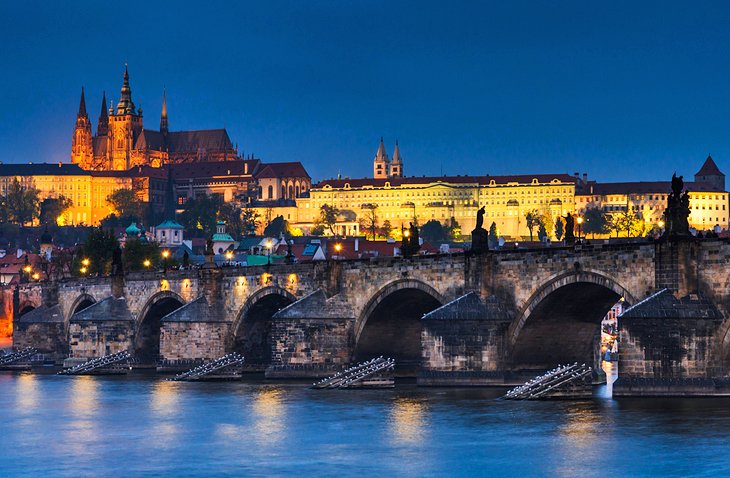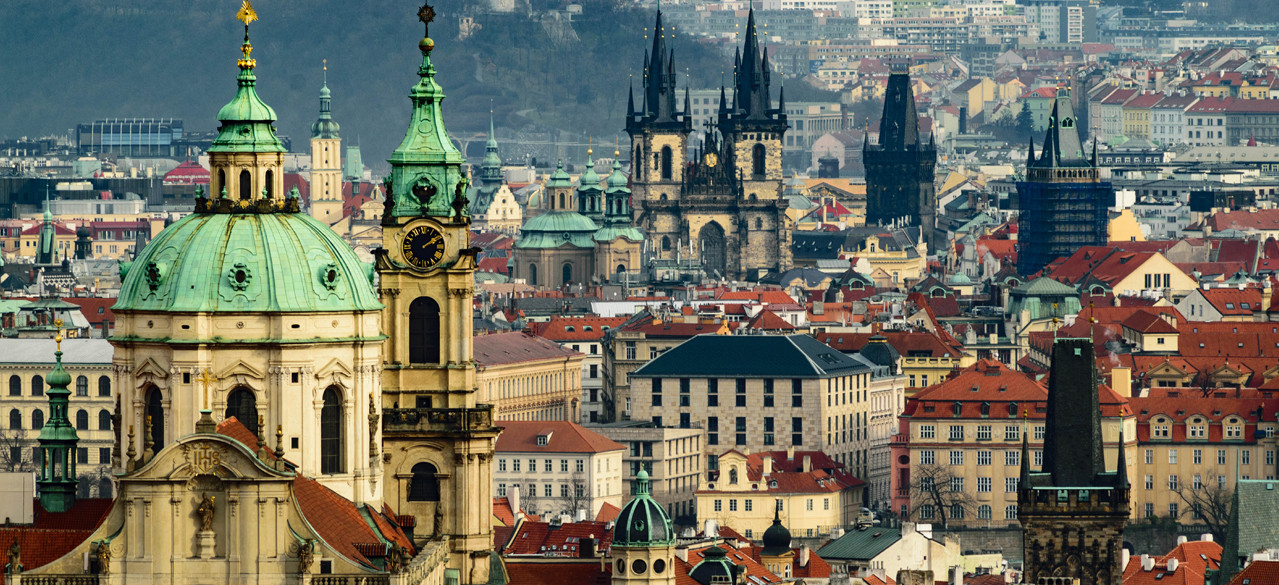
The Czech Republic, a landlocked gem nestled in the heart of Europe, conjures images of fairytale castles, cobblestone streets, and the hearty aroma of pilsner. Yet, to confine this captivating nation to such idyllic notions is to miss its rich tapestry of history, vibrant culture, and breathtaking natural beauty. From the grand imperial avenues of Prague to the rolling vineyards of Moravia and the dramatic rock formations of Bohemian Switzerland, the Czech Republic offers an unparalleled travel experience for every kind of adventurer.
This comprehensive guide will not only unveil the nation’s top attractions but also delve into its fascinating history, provide essential travel tips, explore accommodation and transportation options, and pinpoint the best times to experience its magic.
A Tapestry Woven Through Time: A Glimpse into Czech History

Related Articles about Beyond the Fairytale: Unveiling the Treasures of the Czech Republic:
- Denmark: A Nordic Jewel of Fairytales, Design, and Coastal Charms
- Kyoto: A Journey Through Time and Tranquility
- Israel: A Journey Through Ancient Wonders and Modern Vibrancy
- Mexico: A Kaleidoscope of Culture, History, and Natural Wonders
- Discovering Malaysia: A Kaleidoscope of Culture, Nature, and Culinary Delights
The history of the Czech Republic is a saga of kingdoms, empires, revolutions, and resilience. Its roots stretch back to the Great Moravian Empire in the 9th century, followed by the Bohemian Kingdom, a powerful medieval entity that played a significant role in Central European politics. The reign of Charles IV in the 14th century marked a golden age, with Prague flourishing as an imperial capital and a center of learning and art.
The Hussite Wars of the 15th century, a religious reform movement that predated the Protestant Reformation, left an indelible mark on the national identity. The subsequent Habsburg rule, spanning centuries, saw Bohemia integrated into the vast Austro-Hungarian Empire. The early 20th century brought independence with the formation of Czechoslovakia in 1918, only to be shattered by Nazi occupation during World War II and subsequent communist rule for over four decades. The Velvet Revolution of 1989 peacefully ushered in democracy, and in 1993, Czechoslovakia peacefully dissolved into the Czech Republic and Slovakia. This complex and often tumultuous past has shaped the resilient spirit and rich cultural heritage that the Czech Republic proudly displays today.
Crown Jewels of the Nation: Top Attractions
The Czech Republic boasts a wealth of attractions, each offering a unique window into its soul.
1. Prague: The City of a Hundred Spires
No visit to the Czech Republic is complete without immersing yourself in the enchanting capital, Prague. This UNESCO World Heritage site is a living museum, where Gothic spires pierce the sky, Baroque facades adorn grand squares, and the Vltava River gracefully winds its way through the city.
- Prague Castle: Perched majestically atop a hill, this sprawling complex is the largest ancient castle in the world. Explore St. Vitus Cathedral, a masterpiece of Gothic architecture, wander through the Old Royal Palace, and peek into the charming Golden Lane, once home to alchemists and artisans.
- Charles Bridge: This iconic medieval bridge, adorned with statues of saints, offers breathtaking views of the castle and the Old Town. It’s a vibrant hub of artists, musicians, and street performers, especially enchanting at dawn and dusk.
- Old Town Square: The heart of Prague, this lively square is surrounded by stunning architecture, including the Astronomical Clock, the Church of Our Lady before Týn, and the Jan Hus Memorial. Witness the hourly show of the Astronomical Clock – a marvel of medieval engineering.
- Jewish Quarter (Josefov): Steeped in history, this district houses several synagogues, the Old Jewish Cemetery, and the Jewish Museum, offering poignant insights into the lives and struggles of Prague’s Jewish community.
- Lesser Town (Malá Strana): Nestled beneath Prague Castle, this charming district boasts picturesque streets, beautiful gardens, and the stunning St. Nicholas Church.

2. Český Krumlov: A Bohemian Fairytale
South of Prague lies Český Krumlov, another UNESCO World Heritage site that feels plucked from the pages of a storybook. This perfectly preserved medieval town is dominated by its magnificent castle, which is the second largest in the Czech Republic.
- Český Krumlov Castle: Explore its Renaissance and Baroque interiors, wander through its extensive courtyards, and climb the iconic cylindrical tower for panoramic views of the winding Vltava River and the red-tiled roofs.
- Old Town: Lose yourself in the labyrinthine cobblestone streets, discover hidden courtyards, and admire the colorful burgher houses. The town’s atmosphere is truly captivating, especially in the evening when the crowds thin.
3. Kutná Hora: The Silver City’s Haunting Beauty
Just east of Prague, Kutná Hora is a testament to the wealth and power derived from its once-abundant silver mines.
- Sedlec Ossuary (Bone Church): This chilling yet fascinating chapel is decorated with the bones of an estimated 40,000 to 70,000 people. Elaborate chandeliers, coats of arms, and other decorative elements are all meticulously crafted from human remains.
- St. Barbara’s Church: A magnificent Gothic cathedral, this UNESCO-listed masterpiece showcases stunning architecture and intricate details, reflecting the prosperity of the town during its silver mining heyday.
- Italian Court: Once the royal mint and administrative center, this impressive building now houses a museum detailing the town’s mining history.
4. Bohemian Switzerland National Park (České Švýcarsko): Nature’s Masterpiece
For nature lovers and outdoor enthusiasts, Bohemian Switzerland offers a dramatic landscape of sandstone rock formations, deep gorges, and lush forests.
- Pravčická brána (Pravčice Gate): This is the largest natural sandstone arch in Europe, a truly awe-inspiring sight. Hike to its viewpoint for breathtaking panoramas.
- Edmund’s Gorge and Wild Gorge: Take a serene boat ride through these picturesque gorges, carved by the Kamenice River, surrounded by towering rock walls and verdant foliage.
- Hřensko: A charming village that serves as the gateway to the park, offering various hiking trails and amenities.
5. Brno: Moravia’s Vibrant Heart
The second-largest city in the Czech Republic, Brno, is the capital of Moravia and a dynamic blend of historical charm and modern energy.
- Špilberk Castle: This imposing fortress, once a notorious prison, now houses a museum and offers fantastic city views.
- Cathedral of St. Peter and Paul: Its twin spires are a prominent landmark, and the church itself is a beautiful example of Gothic architecture.
- Villa Tugendhat: A UNESCO World Heritage site, this modernist masterpiece by Ludwig Mies van der Rohe is a must-visit for architecture enthusiasts.
- Moravian Karst: A fascinating underground world of caves and gorges, including the famous Punkva Caves, accessible by boat.
6. Karlovy Vary: The Spa Town of Kings
Nestled in a picturesque valley, Karlovy Vary is renowned for its healing thermal springs and elegant spa architecture.
- Colonnades: Stroll along the various colonnades, where you can sample the mineral-rich waters from numerous springs, each with its own unique taste and purported benefits.
- Grandhotel Pupp: A historic and luxurious hotel that has hosted royalty and celebrities for centuries.
- Moser Glassworks: Witness the artistry of Czech glassmaking at this renowned factory.
Essential Travel Tips for Your Czech Adventure
- Currency: The official currency is the Czech Koruna (CZK). While Euros are accepted in some tourist areas, it’s best to have Koruna for smaller purchases and local establishments.
- Language: The official language is Czech. English is widely spoken in tourist areas, hotels, and by younger generations, but learning a few basic Czech phrases like "Dobrý den" (hello) and "Děkuji" (thank you) will be greatly appreciated.
- Visa: Citizens of many countries can enter the Czech Republic visa-free for short stays as part of the Schengen Area. Always check the latest visa requirements for your nationality.
- Safety: The Czech Republic is generally a safe country with low crime rates. However, like any major tourist destination, be aware of pickpockets, especially in crowded areas.
- Tipping: Tipping is customary in restaurants and for services. Around 10% is a standard tip for good service.
- Power Adapters: The standard voltage is 230V, and sockets are Type E. You’ll likely need a European adapter.
Rest Your Head: Accommodation Options
The Czech Republic offers a diverse range of accommodation to suit every budget and preference.
- Hotels: From luxurious five-star establishments in Prague to charming boutique hotels in smaller towns, you’ll find a vast selection.
- Hostels: A budget-friendly option, especially popular in larger cities like Prague and Brno, offering dormitories and private rooms.
- Apartments and Airbnb: Ideal for families or longer stays, offering more space and the opportunity to self-cater.
- Guesthouses (Penziony): Often family-run, these offer a more intimate and authentic experience, particularly in rural areas.
- Chateaux and Castle Stays: For a truly unique and romantic experience, consider staying in a restored castle or chateau.
Navigating the Land: Transportation
Getting around the Czech Republic is generally easy and efficient.
- Trains: The Czech Republic has an excellent and extensive train network operated by České dráhy (ČD). Trains are a comfortable and scenic way to travel between cities. Booking in advance can sometimes secure better prices.
- Buses: For destinations not well-served by trains, or for more direct routes, buses are a viable option. Companies like RegioJet and FlixBus offer comfortable and affordable services.
- Car Rental: Renting a car offers the most flexibility, especially for exploring rural areas and smaller villages. Be aware of Czech road rules and consider purchasing a vignette (toll sticker) for highways.
- Public Transport within Cities: Major cities like Prague and Brno have efficient public transport systems including trams, buses, and metro (in Prague). Purchasing day passes or multi-day tickets is often the most economical option.
- Taxis: Taxis are available, but it’s advisable to use reputable companies or ride-sharing apps to avoid overcharging.
When to Unveil the Magic: Best Time to Visit
The Czech Republic offers a distinct charm in every season.
- Spring (April – May): This is a delightful time to visit, with blooming flowers, milder temperatures, and fewer crowds than in the peak summer months. The Easter celebrations are also a significant cultural event.
- Summer (June – August): The most popular time to visit, with warm weather perfect for outdoor activities and exploring the cities. Expect larger crowds and higher prices, especially in Prague.
- Autumn (September – October): Fall paints the landscapes in stunning hues of red and gold, offering pleasant temperatures and a more tranquil atmosphere. It’s an excellent time for hiking and wine tasting in Moravia.
- Winter (November – March): While colder, winter transforms the Czech Republic into a magical wonderland, especially during the Christmas season. Christmas markets are world-renowned, offering festive cheer, mulled wine, and traditional crafts. Snow can transform the countryside into a picturesque scene.
Conclusion:
The Czech Republic is a destination that captivates the senses and enriches the soul. From the imperial grandeur of Prague to the medieval allure of Český Krumlov, the haunting beauty of Kutná Hora, and the natural wonders of Bohemian Switzerland, this nation offers an unforgettable journey. By understanding its rich history, embracing its cultural nuances, and planning strategically, you can unlock the full potential of this enchanting European gem and discover why it’s so much more than just a fairytale. So pack your bags, open your mind, and prepare to be utterly charmed by the enduring magic of the Czech Republic.





